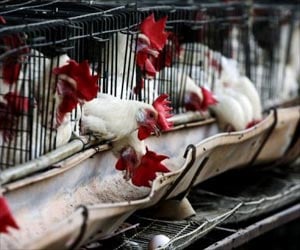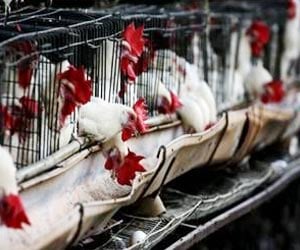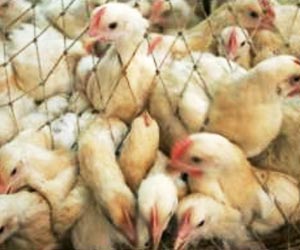Poultry on four more sites in eastern England were being culled Wednesday in a bid to stop an outbreak of the potentially lethal H5N1 Asian strain of bird flu from spreading.
The sites were identified as having "dangerous contact" with turkeys on a free-range farm that were confirmed as having the highly pathogenic virus on Tuesday.Officials said the birds at the new sites were at risk of exposure to the disease due to the movement of people from the initial case.
"At this stage we have not confirmed disease on any of these four premises," said Britain's acting chief veterinary officer Fred Landeg.
"This is a precautionary measure taken to prevent any potential spread of the disease."
There are more than four million turkeys, chickens, ducks and geese registered within the 10-kilometre (six-mile) surveillance zone around the infected farm in the village of Redgrave, in the county of Suffolk.
"I must stress again that poultry keepers in the area must be extremely vigilant, practice the highest levels of biosecurity and report any suspicions of disease," Landeg added.
Advertisement
The cull at Redgrave involves some 5,000 turkeys, more than 1,000 ducks and 500 geese. About 100 turkeys were found dead on Sunday, and overnight between Sunday and Monday a further 80 birds died.
Advertisement
The Food Standards Agency watchdog reassured consumers that poultry meat and eggs were still safe to eat, so long as they were cooked properly.
The new bird flu cases are the latest blow to the British farming industry this year.
Suffolk, a large poultry producing area, was hit by an outbreak of H5N1 at a turkey farm in February.
Some 159,000 turkeys were killed as a precaution at a plant, prompting some countries to impose import bans on British poultry.
An official report said it was most likely the virus reached the flock via imported turkey meat from Hungary.
Britain's first foot and mouth disease cases since 2001 were found in August and the country's first ever cases of bluetongue disease in cattle soon after.
The H5N1 strain first emerged in Asia in 2003, and has caused some 205 deaths in humans, with Indonesia and Vietnam among the worst hit countries, according to World Health Organisation figures.
Source-AFP
LIN/P





